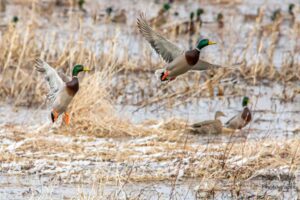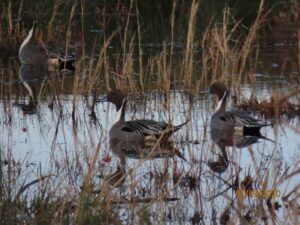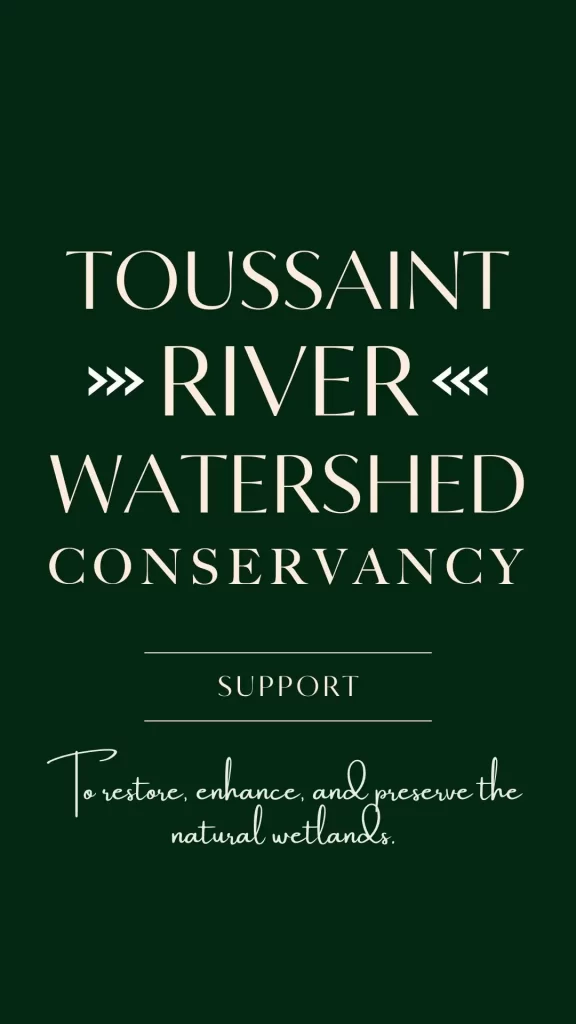5 Reasons for Being
#1
Covering more than 22,000 acres in the lower 13 miles of the Toussaint River, TRWC focuses on developing, supporting, and nurturing optimal habitat for wildlife and migrating waterfowl plus filtering nutrients from run-off to assure clean water delivery to Lake Erie.
#2
Only 5% of Lake Erie’s original wetland resources remain. Wetlands provide vital habitat for migratory waterfowl and fish and perform numerous important hydrological and ecological functions. 
#3
The watershed is within the Audubon Society’s Lake Erie Basin Globally Important Bird Area which encompasses hundreds of thousands of acres along Lake Erie’s Western shores, open water, river estuaries, woodlands, shrublands, and coastal wetlands. The wetlands are actively managed to provide high quality food and cover for migrating waterfowl, shorebirds, wading birds, and other wetland-dependent wildlife.
#4
Manipulation of water levels within these managed wetlands is critical in maintaining the necessary habitat, including mudflats in the spring and fall during peak migration periods for shorebirds. TRWC has the opportunity to address nonpoint source pollution which is one of the most significant impacts on water quality within the watershed. Collaboration with leading environmental organizations deserves to be expanded.
#5
The Ohio EPA has made water quality in the Western Shoreline subwatershed, which includes the TRWC, a high priority based on concerns about drinking water, PCBs in fish tissue, and impairment of aquatic life by siltation, organic enrichment, non-native fish, shellfish, zooplankton and nutrients.
TRWC | 28901 Clemens Road, Suite #107 | Westlake, Ohio 44145 | Phone: (440) 899-0700| wetlands@thetrwc.org


